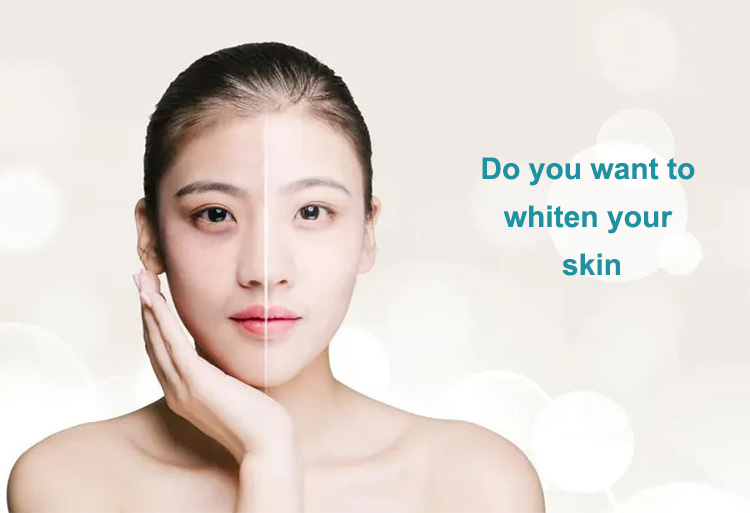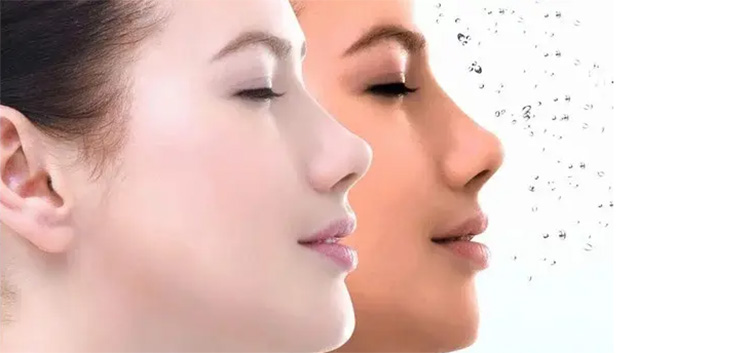“One white covers all the ugly “, so whitening has become an eternal topic of discussion today. There are hundreds of active ingredients developed around whitening. However, among the dazzling whitening ingredients, arbutin is undoubtedly the most dazzling and long-lasting. According to the research report, more than 60% of whitening skin care products on the market contain arbutin. Now let’s get to know arbutin.

Previous generation of arbutin
The discovery of arbutin necessitated the extraction of hydroquinone. At first, hydroquinone was discovered by researchers because of its structural similarity to tyrosine, the substrate of tyrosinase, and was used in the field of skin whitening. Hydroquinone can not only be used as a substitute for tyrosinase substrate, but also inhibit the synthesis of tyrosinase. This discovery has led to the application of hydroquinone in dermatology as a decolorizing agent for the treatment of color spots and inflammatory pigmentation.
However, with the actual use of hydroquinone, it is found that hydroquinone has a strong skin irritation, which may cause skin tingling, itching, erythema or scaling, and may lead to leukoplakia and even tumors in severe cases After comprehensive consideration, hydroquinone is positioned as a prohibited component.
However, in 1998, arbutin, a substance that can achieve whitening effect, was extracted and separated from the bear fruit leaves. Its structure is more stable than that of hydroquinone, making it more stable and more skin friendly. Besides, it can effectively inhibit tyrosinase activity and melanin production. It can not only remove stains, but also has certain bactericidal and anti-inflammatory effects, becoming another favorite of the whitening world after hydroquinone.
The present age of arbutin
After the advent of arbutin, it immediately attracted the attention of various manufacturers and tried to use it. After a period of time, because of its excellent whitening effect, excellent water solubility, clear and transparent solution, low relative cost and high safety, it finally became a deserved champion in the field of whitening.
The production process of arbutin has also gone through four stages: plant extraction, plant cell culture, chemical synthesis and microbial enzyme transformation. With the continuous development of the process, the cost of arbutin is also decreasing. With the continuous research of scholars from various countries, three arbutins have been developed: β- Arbutin α- Arbutin and deoxyaarbutin.
Arbutin in nature is β In form, β- The price of arbutin is α- One third of arbutin, whitening effect is α One fifteenth of. α- Arbutin β- Arbutin is water-soluble, while human stratum corneum is composed of 4-5 layers of dead cells, which is more conducive to the absorption of fat soluble components.
Therefore, deoxyaarbutin came into being. In addition to all glycosides on the side chain of glycosides, it increases the molecular hydrophobicity and shows higher inhibition of tyrosinase activity. Some literature shows that the anti melanin effect of deoxyaarbutin is α- 38.5 times of arbutin, β- Arbutin is 350 times of that, but it is very unstable, so its commercial value is not high.

The future of arbutin
We analyze that in a long time to come, it is difficult to find a component that can shake the position of arbutin in the Jianghu. It is not difficult to draw this conclusion when we compare arbutin with the whitening ingredients popular in the market today.
Arbutin VS phosglycyrrhizin: In terms of whitening effect, phosglycyrrhizin is stronger than arbutin, but its price is more than 30 times that of arbutin, and it is insoluble in water and dark in color. Therefore, from the perspective of cost performance and ease of use, licorice alone will not be qualified to lead the whitening Jianghu.
Arbutin VS vitamin C ethyl ether: VC ethyl ether has greatly improved the stability of VC. It is not only a colorless vitamin C derivative, but also an lipophilic and hydrophilic amphoteric substance. Its ease of use is almost comparable to that of arbutin. But its whitening effect is far less than arbutin, and its use cost is also higher than arbutin.
Arbutin vs nicotinamide: The biggest advantage of nicotinamide is its low cost, but its whitening effect is not as good as that of arbutin, and its safety is not as good as that of arbutin. Its own nicotinic acid has a certain irritation to the skin. It is recommended that you buy nicotinamide with nicotinic acid lower than 100PPM.
Considering the whitening effect, safety, cost performance and ease of use, it is difficult to find a whitening ingredient that can match arbutin at present and in the future, which is why more than 60% of whitening products on the market now contain arbutin.